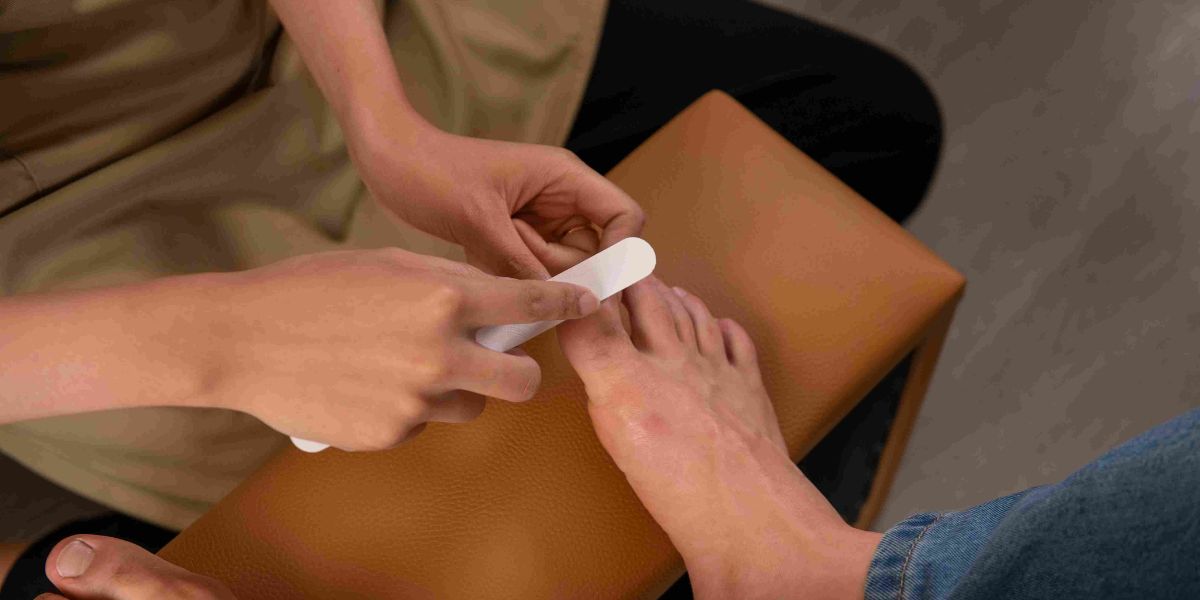Understanding Ingrown Toenails: Causes and Diagnosis
Dealing with an ingrown toenail can be painful and frustrating, but the right ingrown toenail bandage can make a big difference in your healing process. Proper bandaging helps protect the affected area from infection and reduces pressure on the tender skin. Using the correct bandaging techniques for toenails prevents further irritation and speeds up recovery. Many people search for the best bandages for toenail removal to ensure comfort and support during healing. If you want to avoid complications and manage pain effectively, knowing how to apply and maintain an ingrown toenail bandage is essential for successful foot care and recovery.
Effective Treatment Options for Ingrown Toenails
Treatment depends on how severe your ingrown toenail is. Mild cases often heal with home remedies like soaking the foot in warm water and using proper bandaging techniques for toenails to reduce pressure. Over-the-counter antibiotic ointments help with toenail infection prevention. If infection or pain worsens, your podiatrist may remove part of the nail. This minor surgery requires careful post toenail removal care to avoid complications.
Doctors sometimes suggest custom bandages or special splints to keep the nail from digging into the skin again. In persistent cases, complete nail removal or laser treatment might be recommended. You can also find advice at your local foot health clinic to manage and treat ingrown toenails effectively.
How to Properly Bandage an Ingrown Toenail
Knowing how to bandage an ingrown toenail correctly helps reduce pain and speeds healing. First, clean the affected toe gently with warm water and mild soap. After drying, apply an antibiotic ointment to prevent infection. Use a soft, breathable bandage to cover the toe loosely without cutting off circulation. Changing the bandage daily is key to keeping the area clean and dry.
Proper bandaging also cushions the nail edge, reducing foot pressure points and irritation. Avoid tight wraps, which can worsen the problem. If you’re unsure, consult a foot care specialist near me who can teach you the best methods or recommend the best bandages for toenail removal and care.
How Long Should You Keep the Bandage On After Ingrown Toenail Removal?
How long to keep bandage on after ingrown toenail removal? The bandage usually stays on for 24 to 48 hours to protect the wound and prevent infection. Your doctor will advise you when to change the bandage and how often. Keeping the area clean is essential, so avoid soaking the toe until the wound starts healing.
After the first couple of days, you may switch to lighter bandaging to allow air flow, promoting healing. If you notice redness, swelling, or unusual discharge, these are signs of infection after toenail removal, and you should see your podiatrist promptly.
Toenail Removal Healing Stages: What to Expect
Healing after toenail removal takes time and patience. The first stage is swelling and tenderness, which usually lasts about one week. During this time, keep the toe elevated and avoid putting weight on it. The second stage involves the formation of new skin and gradual reduction of pain. It may take several weeks for the nail bed to fully heal and for any discomfort to disappear.
You may notice some new nail growth within a few months, but complete nail regrowth can take up to a year. Knowing the healing stages after toenail removal helps set realistic expectations and avoid unnecessary worry.
When Can You Shower After Toenail Removal?
Many people ask, when can I shower after toenail removal? Usually, you should wait at least 24 hours before letting the toe get wet. After that, keep the foot dry and clean by covering the bandage with a waterproof protector during showers. Wetting the wound too early can cause infection and delay healing.
Gentle cleaning during showers is fine once the doctor clears you, but avoid soaking your foot in water, such as in baths or pools, until fully healed.

When Is It Safe to Wear Shoes After Toenail Removal?
How long after toenail removal can I wear shoes? It depends on the individual, but most can start wearing loose-fitting shoes after one to two weeks. Tight shoes can increase foot friction injuries and worsen pain. Wearing open-toed sandals or shoes with a wide toe box helps protect the area and prevents pressure on the healing toe.
Always follow your podiatrist’s advice. Wearing the wrong footwear too soon may slow recovery or cause complications.
Choosing the Best Ingrown Toenail Bandage in Arizona
If you live in Arizona, it’s important to select the best ingrown toenail bandage designed for comfort and protection in a hot, dry climate. Breathable, hypoallergenic materials help avoid irritation and keep the toe dry. Look for bandages that cushion the nail edge to reduce pain and promote healing.
Local Arizona foot care clinics offer expert recommendations on bandages and other treatments. Visiting a clinic ensures you get personalized advice based on your foot condition and lifestyle.
FAQs About Ingrown Toenails and Bandaging
Many ask, should I see a podiatrist for an ingrown toenail? If home care doesn’t help or if you have diabetes, it’s best to consult a specialist. Another common question is, can bandaging heal an ingrown toenail? Bandaging helps relieve pain but may not fix severe cases alone.
People also wonder, what is the best ingrown toenail bandage? The ideal bandage is soft, breathable, and easy to change, providing gentle support without pressure. Remember, proper care speeds healing and prevents infection. Always watch for signs of infection after toenail removal and seek medical help if needed.
FAQs
Do ingrown toenail bandaids work?
Yes, ingrown toenail bandaids can protect the area and reduce pain, but they don’t cure the condition alone.
Does wrapping an ingrown toenail help?
Wrapping an ingrown toenail helps keep it clean and prevents further irritation while it heals.
What draws an ingrown toenail out?
Soaking the foot and gentle lifting with cotton or dental floss can help draw an ingrown toenail out of the skin.
Should you tape an ingrown toenail?
Taping can protect the ingrown toenail and keep it from digging deeper, but it must be done carefully to avoid more damage.
Welcome to Heel Tooth! I’m Lee Marvin.

